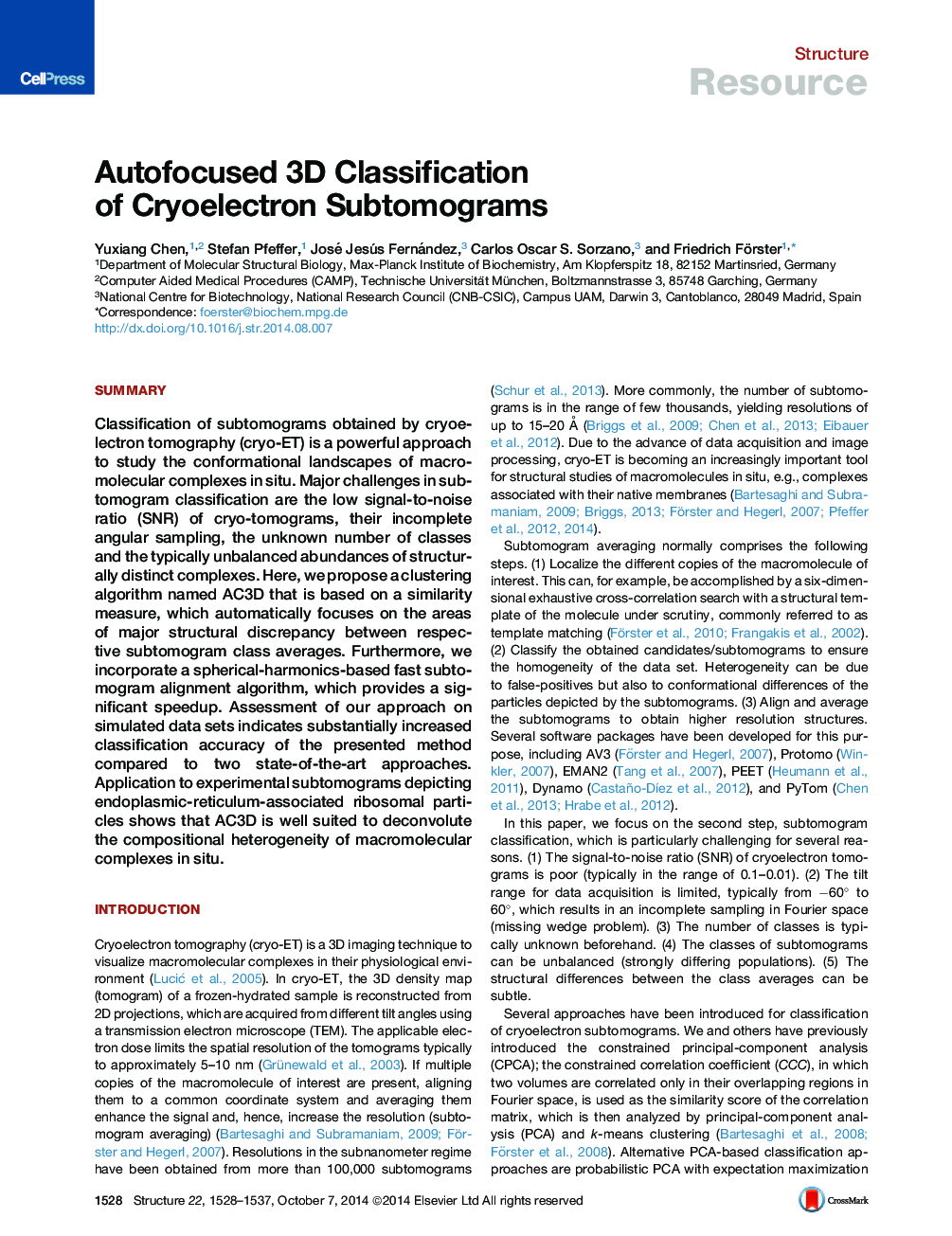| Article ID | Journal | Published Year | Pages | File Type |
|---|---|---|---|---|
| 2029694 | Structure | 2014 | 10 Pages |
•AC3D is a powerful method for classification of cryoelectron subtomograms•A near-perfect classification result is achieved for realistic simulations•AC3D recovers known structural heterogeneity of ribosomes in experimental data•AC3D detects structurally distinct protein translocon populations
SummaryClassification of subtomograms obtained by cryoelectron tomography (cryo-ET) is a powerful approach to study the conformational landscapes of macromolecular complexes in situ. Major challenges in subtomogram classification are the low signal-to-noise ratio (SNR) of cryo-tomograms, their incomplete angular sampling, the unknown number of classes and the typically unbalanced abundances of structurally distinct complexes. Here, we propose a clustering algorithm named AC3D that is based on a similarity measure, which automatically focuses on the areas of major structural discrepancy between respective subtomogram class averages. Furthermore, we incorporate a spherical-harmonics-based fast subtomogram alignment algorithm, which provides a significant speedup. Assessment of our approach on simulated data sets indicates substantially increased classification accuracy of the presented method compared to two state-of-the-art approaches. Application to experimental subtomograms depicting endoplasmic-reticulum-associated ribosomal particles shows that AC3D is well suited to deconvolute the compositional heterogeneity of macromolecular complexes in situ.
Graphical AbstractFigure optionsDownload full-size imageDownload high-quality image (362 K)Download as PowerPoint slide
